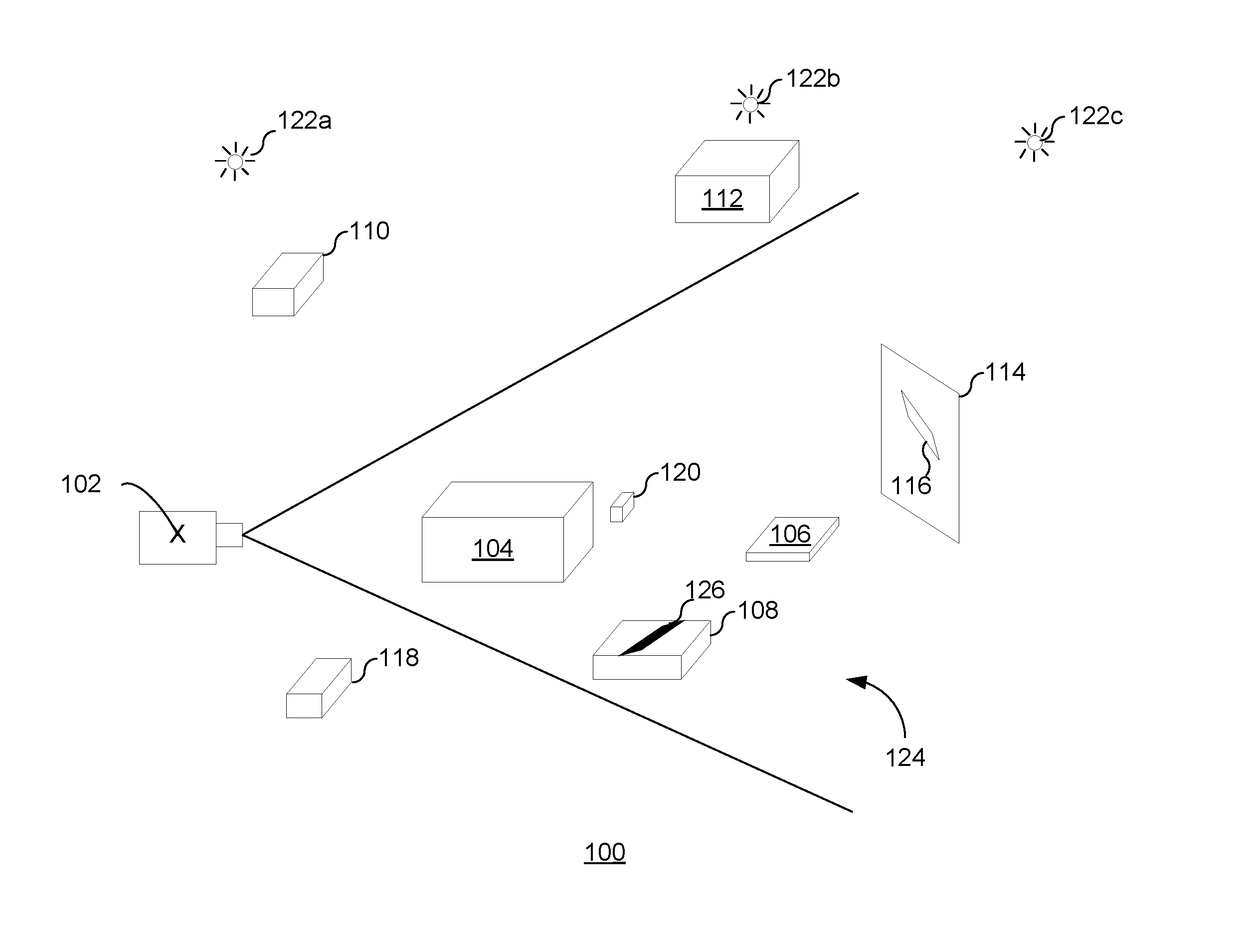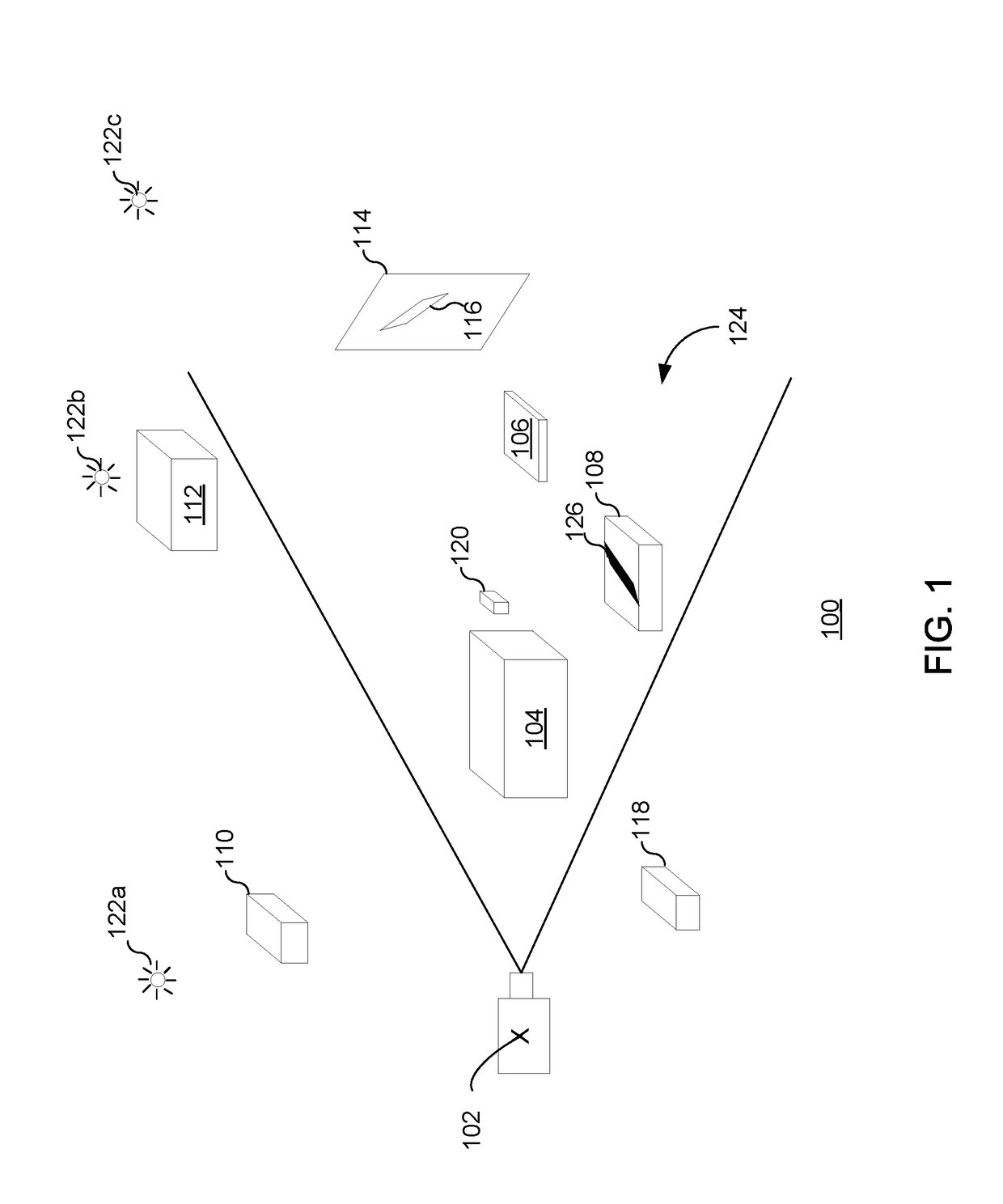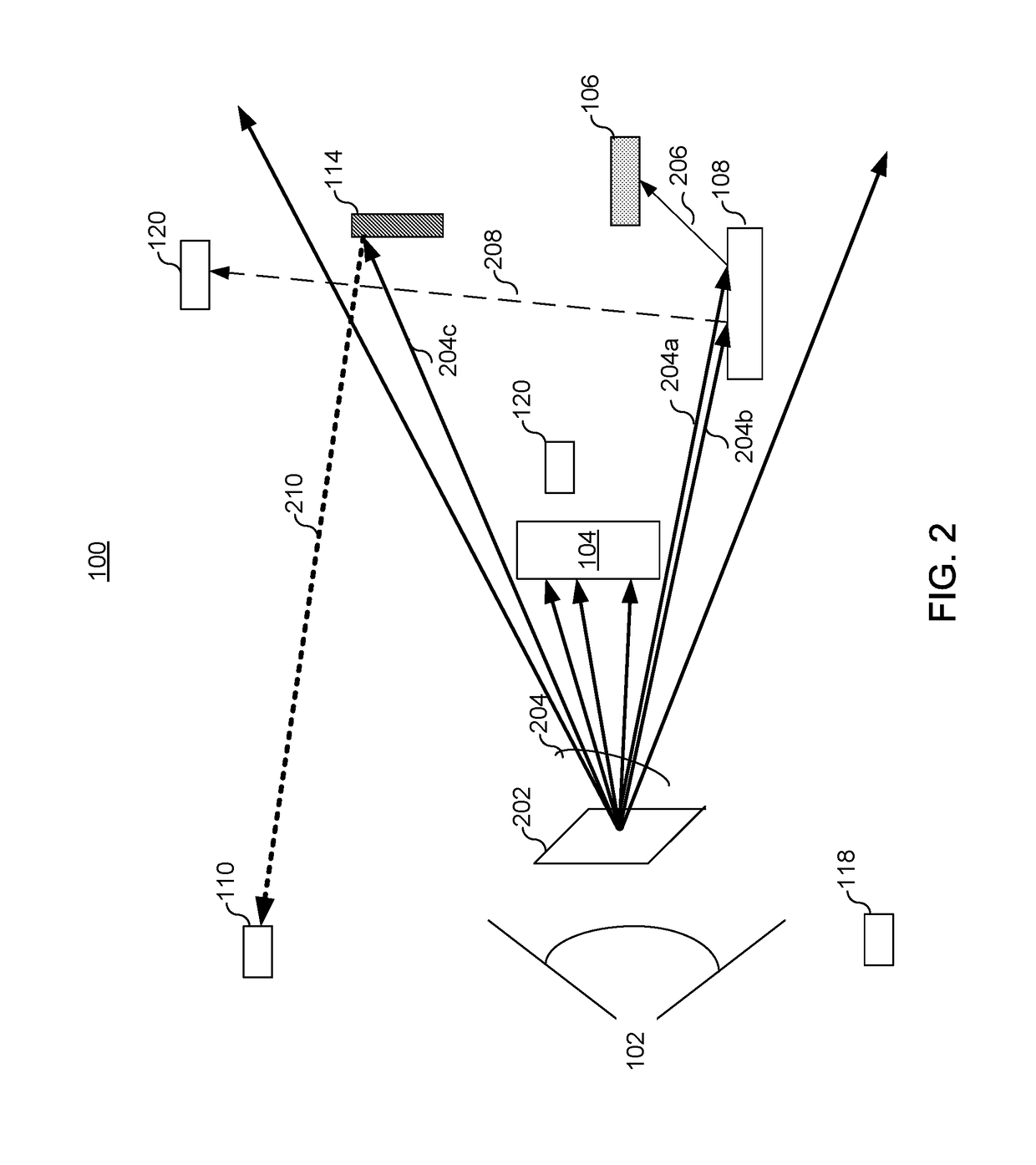Efficient rendering based on ray intersections with virtual objects
a virtual object and ray intersection technology, applied in the field of rendering, can solve the problems of affecting the display of visible objects, computationally intensive to account for every object in a 3d scene, etc., and achieve the effect of reducing the amount of rendering resources, improving rendering efficiency, and speeding up the rendering process
- Summary
- Abstract
- Description
- Claims
- Application Information
AI Technical Summary
Benefits of technology
Problems solved by technology
Method used
Image
Examples
Embodiment Construction
[0024]In the following description, various embodiments will be described. For purposes of explanation, specific configurations and details are set forth in order to provide a thorough understanding of the embodiments. However, it will also be apparent to one skilled in the art that the embodiments may be practiced without the specific details. Furthermore, well-known features may be omitted or simplified in order not to obscure the embodiment being described.
[0025]Embodiments are directed to performing a preliminary object analysis through ray tracing to determine which off-camera objects in a three-dimensional (3D) scene can be excluded in the rendering process. Certain off-camera objects, even though not appearing in an rendered image, can impact appearance of one or more on-camera objects in the rendered image. Such off-camera objects may be referred to as contributing objects and can be included in the rendering process. On the other hand, certain off-camera objects in the 3D s...
PUM
 Login to View More
Login to View More Abstract
Description
Claims
Application Information
 Login to View More
Login to View More - R&D
- Intellectual Property
- Life Sciences
- Materials
- Tech Scout
- Unparalleled Data Quality
- Higher Quality Content
- 60% Fewer Hallucinations
Browse by: Latest US Patents, China's latest patents, Technical Efficacy Thesaurus, Application Domain, Technology Topic, Popular Technical Reports.
© 2025 PatSnap. All rights reserved.Legal|Privacy policy|Modern Slavery Act Transparency Statement|Sitemap|About US| Contact US: help@patsnap.com



